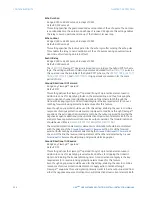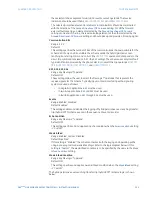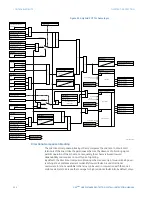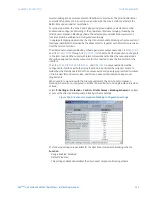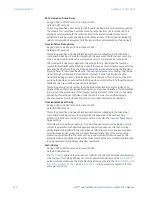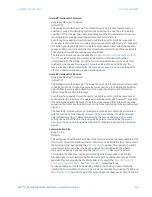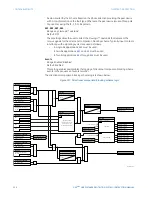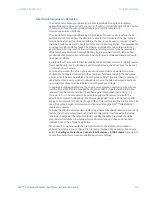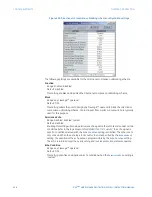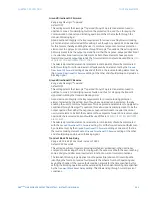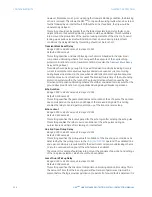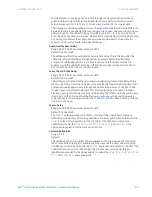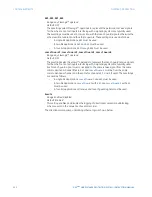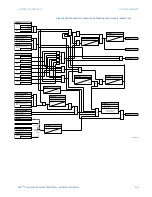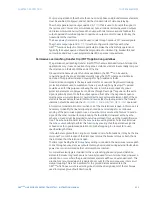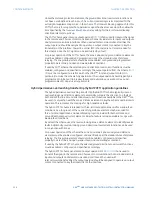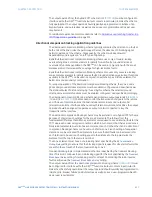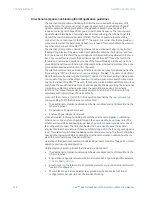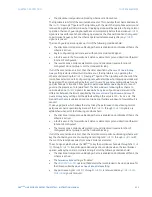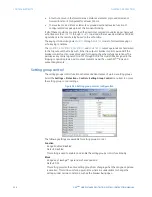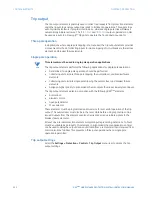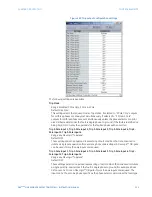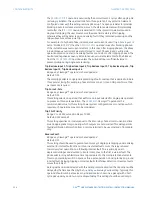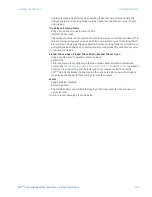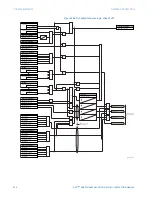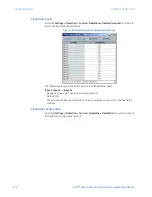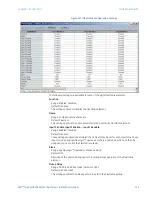
314
D90
PLUS
LINE DISTANCE PROTECTION SYSTEM – INSTRUCTION MANUAL
CONTROL ELEMENTS
CHAPTER 7: PROTECTION
Figure 260: Directional comparison unblocking scheme logic, sheet 2 of 2
Pilot-aided scheme application guidelines
This section provides general application guidelines for implementing pilot-aided schemes
with the D90
Plus
.
Direct underreaching transfer trip (DUTT) application guidelines
The direct underreaching transfer trip (DUTT) scheme uses an under-reaching zone 1
distance element to key a transfer trip signal to the remote end or ends, where on receipt,
the DUTT pilot scheme operates without any additional supervision.
For proper operation of the scheme, the zone 1 phase and ground distance elements must
be enabled, configured and set per the standard rules of distance relaying.
The DUTT scheme generates an output operand (
DUTT TX
) that is used to transmit the signal
to the remote end. Choices of communications channel include remote inputs and outputs
and telecommunications interfaces. When used with telecommunications facilities, the
output operand should be assigned to operate an output contact connected to key the
transmitter at the interface.
Note that the same protection signaling may be used by a breaker failure scheme, in which
case the signal can be sealed in by breaker failure for a time longer than the autoreclose
“reclaim” time which then prevents autoreclose when not required.
A provision for an optional seal-in of the send signal is made to cover those situations
where PLC (power line carrier) signaling is used and the signal must be transmitted in a
potentially noisy situation due to the fault.
The scheme output operand (
DUTT OP
) must be configured to interface with other
D90
Plus
functions (output contacts in particular) to make the scheme fully operational.
Typically, the output operand should be programmed to initiate a trip, breaker fail, and
autoreclose, and drive a user-programmable LED as per user requirements.
Permissive underreaching transfer trip (PUTT) application guidelines
The permissive underreaching transfer trip (PUTT) scheme uses an underreaching zone 1
distance element to key a transfer trip signal to the remote end where it is supervised by
the overreaching zone 2 distance elements.
$&'5
75,3
23(132/(23
)/(;/2*,&23(5$1'6
$5)25&(375,3
3KDVHVHOHFWRU
5;
/RVVRIJXDUG
6(77,1*
&RPPXQLFDWLRQ%LWV
581
7ULSWDEOH
75$160,7
23(132/(23
)/(;/2*,&23(5$1'6
$5)25&(375,3
3KDVHVHOHFWRU
5;
/RVVRIJXDUG
581
(&+2
3KDVHVHOHFWRU
5;
/RVVRIJXDUG
581
7UDQVPLWWDEOH
(FKRWDEOH
'&8%75,3%
)/(;/2*,&23(5$1'6
'&8%75,3$
'&8%75,3&
'&8%75,33
'&8%7;
)/(;/2*,&23(5$1'6
'&8%7;
'&8%7;
'&8%7;
23(5$7(
)/(;/2*,&23(5$1'6
'&8%23

